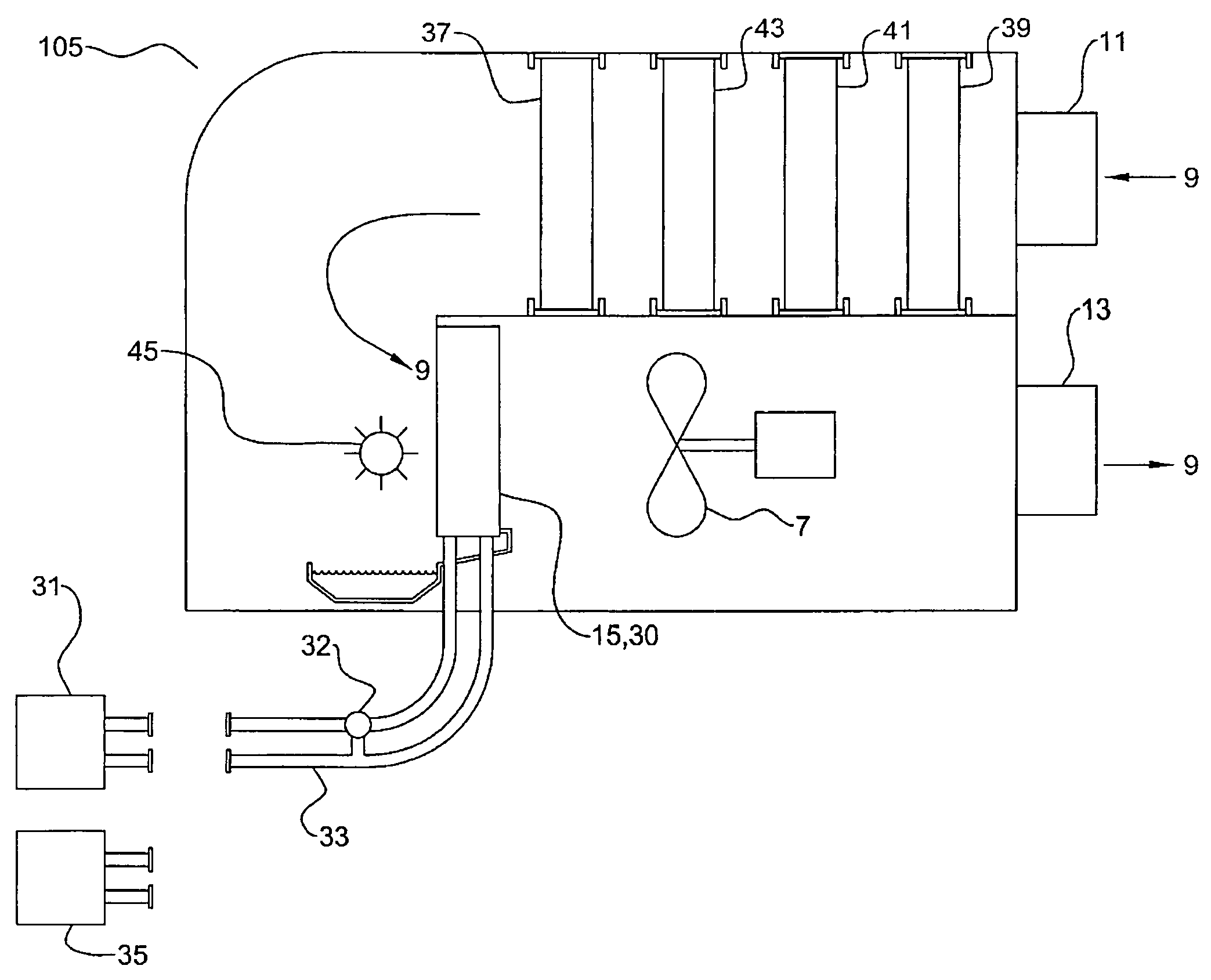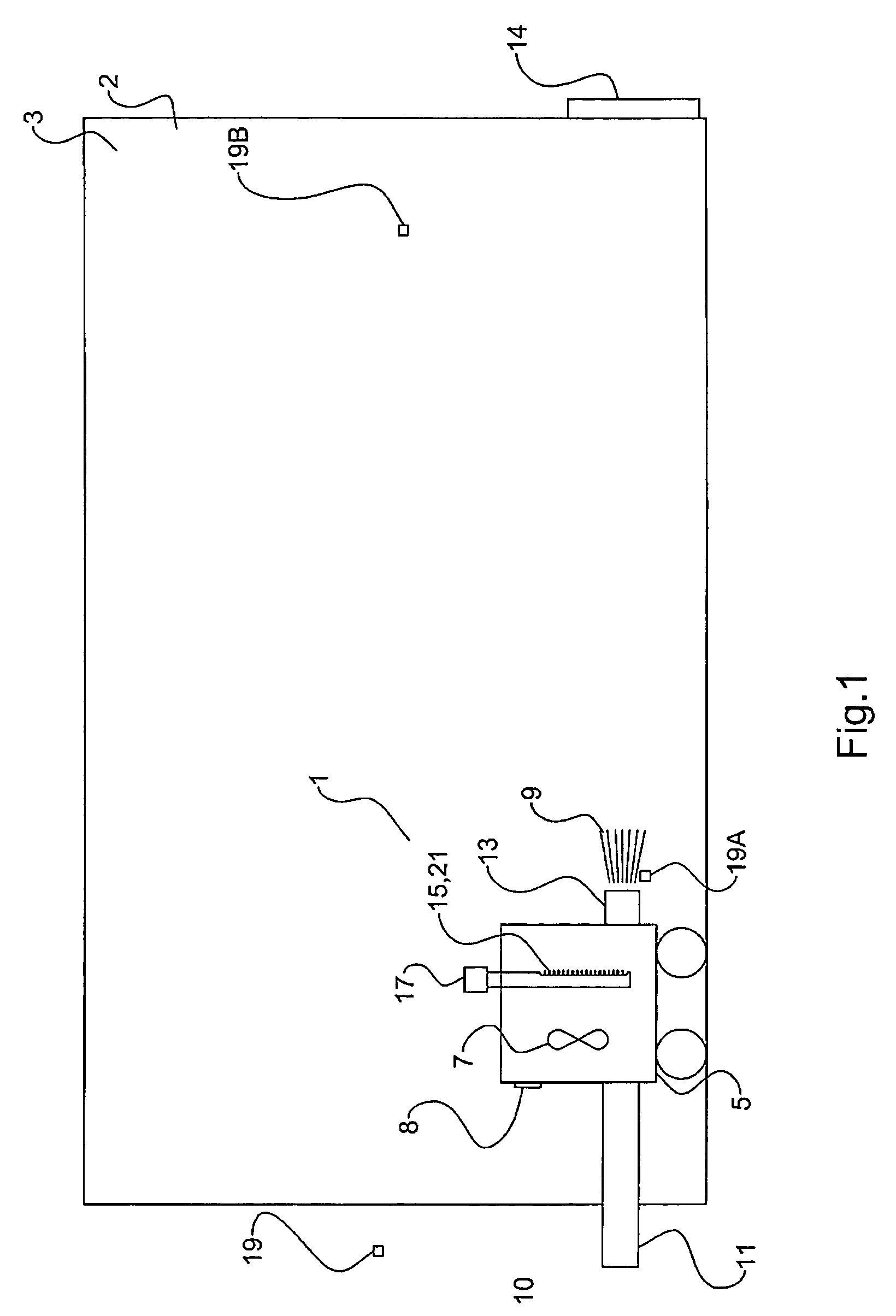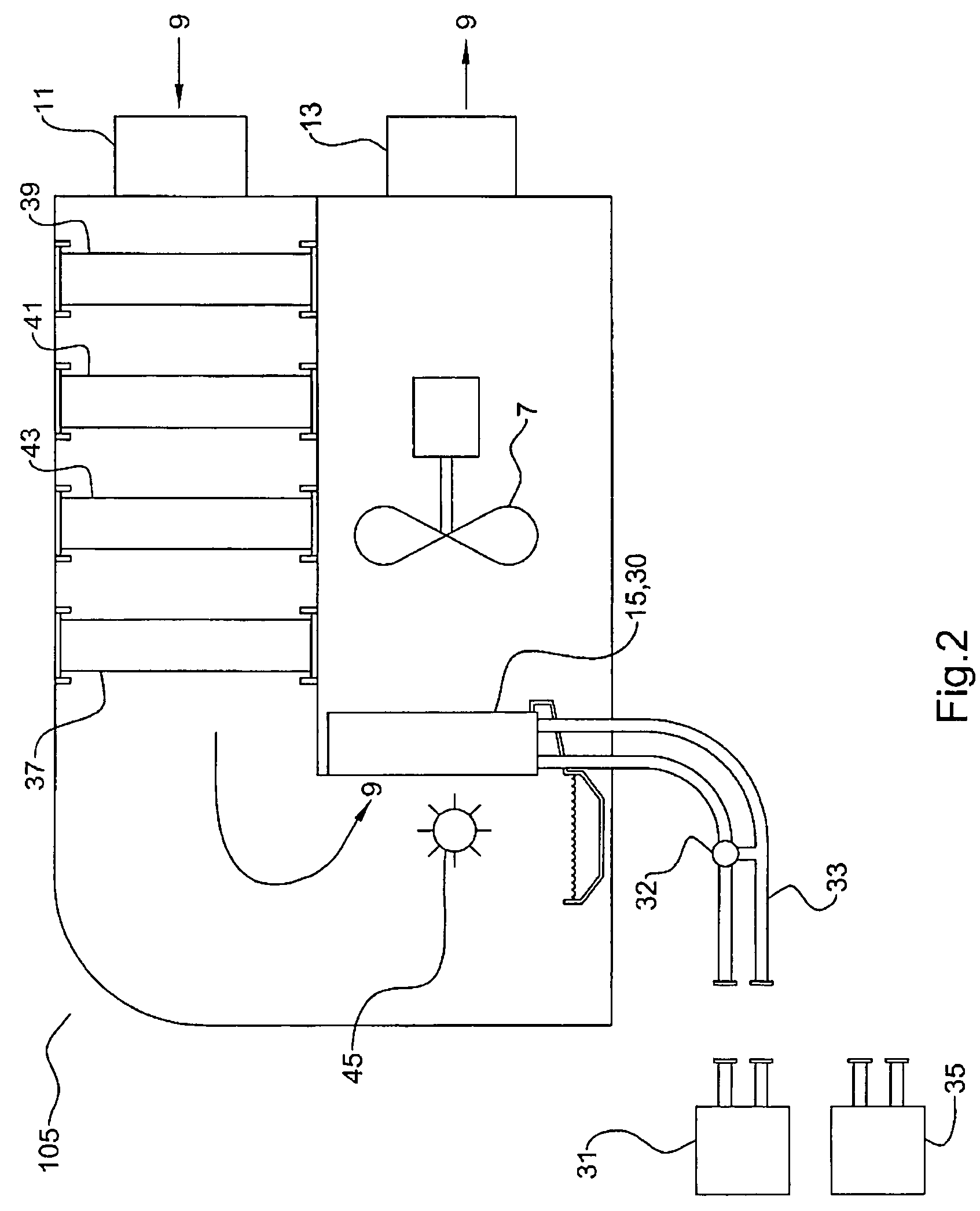Method and apparatus for controlling humidity and mold
a technology of humidity and mold, applied in the field of methods and equipment for controlling humidity and mold, can solve the problems of drywall and flooring absorb moisture, large problems, and excessive moisture in buildings, and achieve the effect of significantly reducing relative humidity and reducing mold growth
- Summary
- Abstract
- Description
- Claims
- Application Information
AI Technical Summary
Benefits of technology
Problems solved by technology
Method used
Image
Examples
Embodiment Construction
[0034]FIG. 1 schematically illustrates an apparatus 1 for reducing a relative humidity of inside air 2 inside an enclosed space 3. The apparatus 1 comprises a portable outside air heat exchanger unit 5 comprising a fan 7 operative to create an air stream 9 by drawing air from an intake 11 and discharging the air through an outlet 13. The intake 11 is adapted to draw outside air 10 from outside the enclosed space 3 and the outlet 13 is adapted to discharge the air stream 9 into the enclosed space 3. The outside air heat exchanger unit 5 is illustrated located inside the enclosed space 3, with the intake 11 located outside, however alternatively the outside air heat exchanger unit 5 could be located outside with the outlet 13 located inside the enclosed space 3. Portability is provided by wheels or the like as illustrated.
[0035]The outside air heat exchanger unit 5 further comprises a temperature adjusting element 15 located in the air stream 9. A heating source is connectable to the ...
PUM
| Property | Measurement | Unit |
|---|---|---|
| humidity | aaaaa | aaaaa |
| humidity | aaaaa | aaaaa |
| temperature | aaaaa | aaaaa |
Abstract
Description
Claims
Application Information
 Login to View More
Login to View More - R&D
- Intellectual Property
- Life Sciences
- Materials
- Tech Scout
- Unparalleled Data Quality
- Higher Quality Content
- 60% Fewer Hallucinations
Browse by: Latest US Patents, China's latest patents, Technical Efficacy Thesaurus, Application Domain, Technology Topic, Popular Technical Reports.
© 2025 PatSnap. All rights reserved.Legal|Privacy policy|Modern Slavery Act Transparency Statement|Sitemap|About US| Contact US: help@patsnap.com



